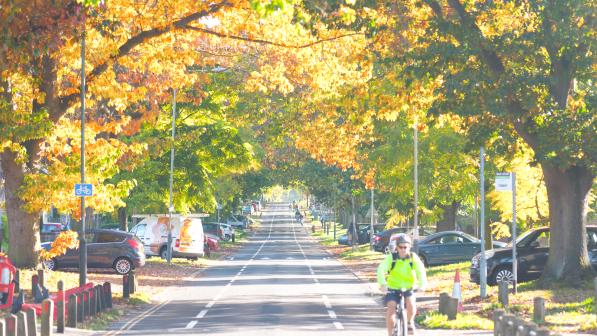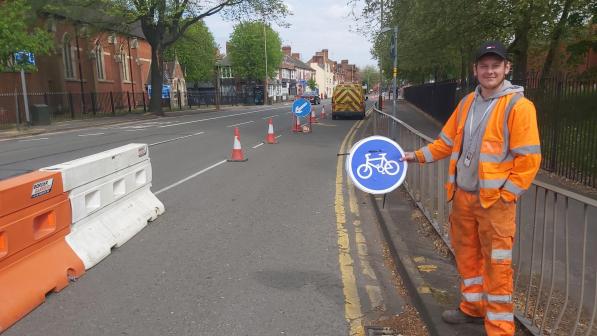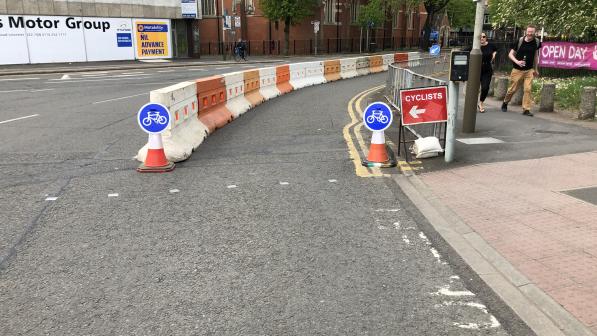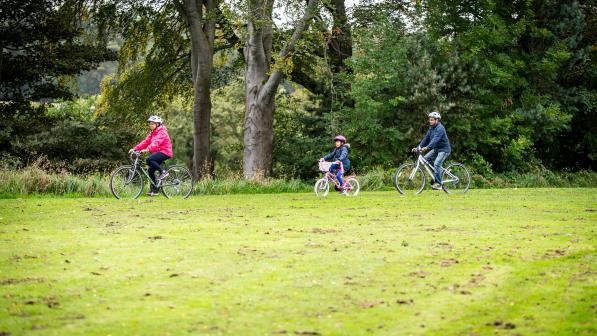The fight for space for distancing in the world’s cities

Cities around the world are looking very different with reductions in road travel of around 70-80% according to estimates, so now would be the right time to follow some of the bold initiatives in other countries putting people at the centre of UK transport planning.
The World Health Organisation (WHO) issued guidance last week for moving around during the coronavirus outbreak that stated for short essential journeys: “Whenever feasible, consider riding bicycles or walking.”
Some cities were already thinking this way and examining measures to make active travel more practical.
The empty spaces freed up by the reduction in traffic during lockdown has encouraged more families around the world to use cycling as their daily form of exercise. It is in cities where previously there was so little space that many innovative urban transport solutions are being trialled and bicycle use is being encouraged.
In Berlin, bike lanes have been redrawn to provide more space and are marked with yellow bike symbols. While in Milan, where Italians are gradually beginning to emerge from weeks staying indoors, 35km of roads will be turned over to cyclists, and pavements are to be expanded to allow people to more effectively observe social distancing advice.
In Paris, plans are even more ambitious, with lockdown resulting in an acceleration of the vision for the ‘city of 15 minutes’ where every street would have a cycle path and residents can reach everywhere they need to go – on foot or by cycle – in a quarter of an hour.
So far, the UK has been lagging behind. Maderia Drive in Brighton is closed to motor traffic between 8am-8pm to give local residents who do not have access to a garden more space to walk, run and cycle. Brighton and Hove City Council says it will examine the possibility of introducing other car-free areas in the city.
In Cardiff, a 20mph speed limit and restricted parking have been introduced in Roath Park Lane to discourage non-essential trips by car. In Scotland, policy-makers in Glasgow and Edinburgh are discussing the possibility of creating temporary cycle paths to enable riders and walkers to better adhere to social distancing advice.
Taken together these measures wouldn’t sound like much to a resident of Bogota, where 35km of traffic lanes have been replaced with new cycle lanes to ease overcrowding on public transport and reduce air pollution levels.
In Budapest, pop-up cycle lanes have contributed to a 90% fall in passengers on some bus routes. These measures are expected to be in place until September. But the municipal government says it will collect data about traffic movements during the summer. If the experience proves favourable some of the lanes may become permanent after the end of the current restrictions.
WHO advice for essential travel during the pandemic recognises that cycling or walking “provides physical distancing while helping you to meet the minimum requirement for daily physical activity, which may be more difficult due to increased teleworking, and limited access to sport and other recreational activities.”
Physical distancing requirements are likely to remain in place for some time, even if more businesses and workplaces are gradually reopened and lockdown restrictions eased. That means in the UK we need more space for social distancing.
We must take proactive steps now to give space back to people as they have in other countries
Duncan Dollimore, Cycling UK’s head of campaigns
Duncan Dollimore, Cycling UK’s head of campaigns, said: “Conditions for cycling vary around the world but when I see other countries and cities acting quickly during the COVID-19 crisis by creating temporary cycle lanes, widening pavements and giving space to people walking and cycling, I can’t help thinking the UK could be doing so much better.
“More families seem to be out cycling than before the lockdown, encouraged no doubt by the decrease in traffic on our roads.
“Unfortunately, the empty, less congested roads have also led a minority of people to endanger others by grossly exceeding the speed limit, so we need safe and protected space to enable people to travel actively whilst maintaining social distancing.
“As and when restrictions ease, it’s also likely that some people will be reluctant to use public transport, so we must take proactive steps now to give space back to people as they have in other countries.
“It’s not complex, costly or difficult to use some cones and planters to create a cycle lane, widen a pavement or filter traffic. It just needs the political will to give more space for cycling and walking, enabling key workers to travel safely to and from work, families to travel actively for their daily exercise, and so we can all socially distance in places designed for people rather than motor vehicles.”
Earlier this week, Cycling UK wrote to council leaders in England, Scotland and Wales urging them to adopt temporary measures to allow more space for cyclists on our roads.
You can lend your voice in support of this campaign by using the simple online tool Cycling UK has created to help you create an email to send to your local councillor explaining how setting up additional space for cyclists on our roads can be achieved quickly and at low cost.
Take action



